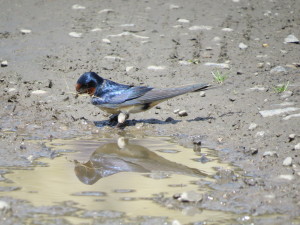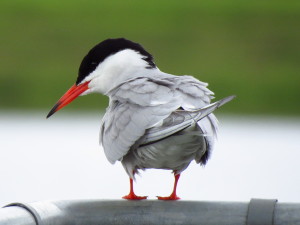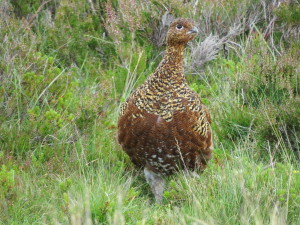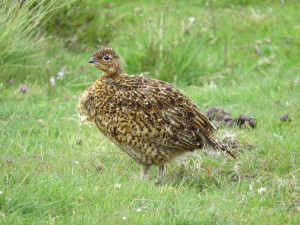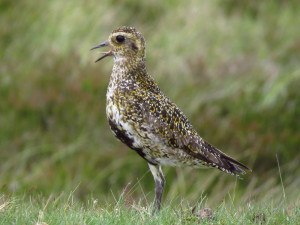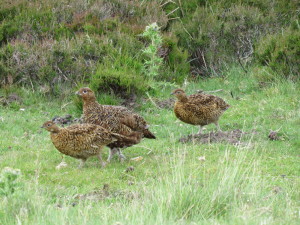Arriving at Whittle Dene, the early morning sunshine at the coast had all but disappeared under a shroud of drizzle and low cloud. Fortunately, later this cleared into a fine,though breezy day. Common Terns were very much in evidence here, with 23 birds counted,four-five pairs having young on a floating,perspex walled island. Two Yellow Wagtails noted as they called and a Great crested Grebe swam out on one of the reservoirs, a Little Grebe called. Two Skylarks sang over the fields nearby, perhaps the last time I will hear their song this year,a s most have ceased. Sedge Warblers were still very vocal, with four heard here. Swallows and Sand Martins noisily mobbed a passing female Sparrowhawk as a Heron fished, unconcerned.
On westward, I headed for the Blanchland area, where the moors were now strangely quiet save for the odd Curlew call. Much of the local breeding Lapwing population had gathered in a flock now in one field, 82 birds counted,including large young. A few Oystercatchers with them and four Curlews. A few alarm calls from the Lapwings as a Red Kite soared overhead and right over the nearby village roofs. Later, a second Red Kite was cautiously feeding at a road kill lamb, and a further 33 Lapwings noted on the moor. A Kestrel and Buzzard seen here too. Then another moor, and the sound of displaying Golden Plover, with 7 or 8 heard. A pair were next to the road, alarm calling as two small young hid in the heather. Fantastic, close views were had as I remained in the car. Red Grouse were common here, with an adult with 3 large young birds very close to the car,giving great views and then an adult female with six young, smaller this time, in close attendance.
In Blanchland village,screaming parties of Swifts,birds swooping into nest holes on the old buildings, Swallows and House Martins gathering mud and young lined up to be fed on wires, Spotted Flycatcher and several Grey Wagtails all made for good birding.
A.S.Jack
